Vega 1 launched
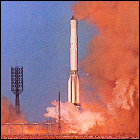 The unmanned Vega 1 space probe is launched by the Soviet Union on a dual mission to drop off a lander at Venus and then to intercept Halley’s Comet in 1986. Derived from the USSR’s earlier Venera Venus landers, Vega will test a refined landing system for landing on Venus by balloon, and will then join an international fleet of unmanned spacecraft attempting to take advantage of Halley’s visit to the inner solar system in late 1985 and early 1986.
The unmanned Vega 1 space probe is launched by the Soviet Union on a dual mission to drop off a lander at Venus and then to intercept Halley’s Comet in 1986. Derived from the USSR’s earlier Venera Venus landers, Vega will test a refined landing system for landing on Venus by balloon, and will then join an international fleet of unmanned spacecraft attempting to take advantage of Halley’s visit to the inner solar system in late 1985 and early 1986.
New assignment for Pioneer Venus
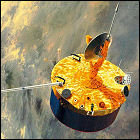 Having received new orders from NASA, the still-functional Pioneer Venus Orbiter – launched in 1978 and in a high, looping orbit over Venus since it ceased active observations of the planet in 1981 – turns its instruments in the direction of Comet Encke, which is currently passing through the inner solar system. Rather than its cameras, the orbiter’s ultraviolet spectrometer is trained on the comet as Earth-based researchers try to determine the composition and rotational speed of Encke’s nucleus. The Pioneer Venus Orbiter will continue to observe other comets through the late 1980s.
Having received new orders from NASA, the still-functional Pioneer Venus Orbiter – launched in 1978 and in a high, looping orbit over Venus since it ceased active observations of the planet in 1981 – turns its instruments in the direction of Comet Encke, which is currently passing through the inner solar system. Rather than its cameras, the orbiter’s ultraviolet spectrometer is trained on the comet as Earth-based researchers try to determine the composition and rotational speed of Encke’s nucleus. The Pioneer Venus Orbiter will continue to observe other comets through the late 1980s.
Landsat 5
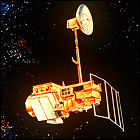 NASA launches Earth resource observation satellite Landsat 5, virtually identical to the Landsat 4 satellite launched in 1982. Like Landsat 4, Landsat 5 is capable of sending real-time data to Earth through the Tracking & Data Relay Satellite (TDRS) system. Landsat 5 becomes the longest-operating Earth observation satellite, outliving its anticipated three-year design life by a factor of ten and not becoming inoperable until 2013; by the time it was shut down, Landsats 7 and 8 had been launched. Among the events Landsat 5 witnessed from orbit were a tsunami that killed nearly a quarter million people along Indonesia’s coastlines in 2004, and the 1986 meltdown of the Chernobyl nuclear reactor in the Soviet Union.
NASA launches Earth resource observation satellite Landsat 5, virtually identical to the Landsat 4 satellite launched in 1982. Like Landsat 4, Landsat 5 is capable of sending real-time data to Earth through the Tracking & Data Relay Satellite (TDRS) system. Landsat 5 becomes the longest-operating Earth observation satellite, outliving its anticipated three-year design life by a factor of ten and not becoming inoperable until 2013; by the time it was shut down, Landsats 7 and 8 had been launched. Among the events Landsat 5 witnessed from orbit were a tsunami that killed nearly a quarter million people along Indonesia’s coastlines in 2004, and the 1986 meltdown of the Chernobyl nuclear reactor in the Soviet Union.
Pioneer 10 past Pluto
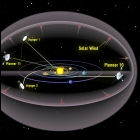 NASA’s Pioneer 10 unmanned spacecraft becomes the first human-made spacecraft to pass beyond the orbit of Pluto, the outermost known planet in the solar system. (Pioneer 10 merely crosses the planet’s orbital path; Pluto itself is in a different part of its orbit, nowhere near Pioneer at the time.) Launched in 1972, Pioneer 10 was the first spacecraft to cross the asteroid belt and observe the giant planet Jupiter at close range, blazing a trial for other outer solar system robotic exploration missions.
NASA’s Pioneer 10 unmanned spacecraft becomes the first human-made spacecraft to pass beyond the orbit of Pluto, the outermost known planet in the solar system. (Pioneer 10 merely crosses the planet’s orbital path; Pluto itself is in a different part of its orbit, nowhere near Pioneer at the time.) Launched in 1972, Pioneer 10 was the first spacecraft to cross the asteroid belt and observe the giant planet Jupiter at close range, blazing a trial for other outer solar system robotic exploration missions.
GOES-6 goes up
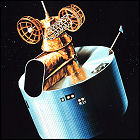 NOAA’s GOES-6 Geostationary Operational Environmental Satellite is launched from Cape Canaveral into a geosynchronous orbit over 135 degrees west longitude on Earth, a position which will change several times over GOES-5’s career until 1988, allowing it to monitor weather over the continental United States and Europe. GOES-5’s primary set of “eyes” will fail in 1989, leaving GOES-7 as the sole working GOES weather satellite until the mid-1990s. Even while “blind”, GOES-5 will serve as a communications relay satellite until its boost to “graveyard” orbit and shutdown in 1992.
NOAA’s GOES-6 Geostationary Operational Environmental Satellite is launched from Cape Canaveral into a geosynchronous orbit over 135 degrees west longitude on Earth, a position which will change several times over GOES-5’s career until 1988, allowing it to monitor weather over the continental United States and Europe. GOES-5’s primary set of “eyes” will fail in 1989, leaving GOES-7 as the sole working GOES weather satellite until the mid-1990s. Even while “blind”, GOES-5 will serve as a communications relay satellite until its boost to “graveyard” orbit and shutdown in 1992.
Viking 1 shuts down
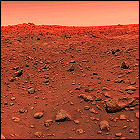 After over six years of continuous operation and data gathering on the planet Mars, the Viking 1 lander – having outlived the power supply aboard its orbiter and now transmitting its observations directly to Earth – is inadvertently silenced during what is intended to be a remote upgrade of its on-board software. Ground controllers are never able to establish contact with Viking 1 again. Its record of continuous operation on another planet is not broken until 2010, when Viking 1 is outlasted by NASA’s Opportunity rover.
After over six years of continuous operation and data gathering on the planet Mars, the Viking 1 lander – having outlived the power supply aboard its orbiter and now transmitting its observations directly to Earth – is inadvertently silenced during what is intended to be a remote upgrade of its on-board software. Ground controllers are never able to establish contact with Viking 1 again. Its record of continuous operation on another planet is not broken until 2010, when Viking 1 is outlasted by NASA’s Opportunity rover.
Landsat 4
 NASA launches Landsat 4, the fourth Landsat Earth resource observation satellite and the first to be redesigned from the ground up (previous Landsats had been based on NASA’s Nimbus satellites from the 1960s and ’70s). For the first time, Landsat data processing and distribution is handled by another government agency, the U.S. Geological Survey, which partners with NASA on all future Landsat satellites. Landsat 4 is the first Landsat to link up to NASA’s TDRS (Tracking & Data Relay Satellite) system, thus enabling real-time data transmission to Earth even when Landsat 4 isn’t passing over a ground station. Landsat 4 remains operational through the end of 1993.
NASA launches Landsat 4, the fourth Landsat Earth resource observation satellite and the first to be redesigned from the ground up (previous Landsats had been based on NASA’s Nimbus satellites from the 1960s and ’70s). For the first time, Landsat data processing and distribution is handled by another government agency, the U.S. Geological Survey, which partners with NASA on all future Landsat satellites. Landsat 4 is the first Landsat to link up to NASA’s TDRS (Tracking & Data Relay Satellite) system, thus enabling real-time data transmission to Earth even when Landsat 4 isn’t passing over a ground station. Landsat 4 remains operational through the end of 1993.
ISEE-3 to ICE
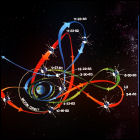 Its primary mission satisfactorily completed, the NASA/ESA ISEE-3 (International Sun-Earth Explorer 3) satellite has a surplus of maneuvering fuel left over, and is given a new mission: it begins a series of over a dozen maneuvers utilizing both thrusters and gravity-assists, intended to push it out of its LaGrange point between Earth and the sun and toward a 1985 rendezvous with Comet Giacobinni-Zinner. Upon its final maneuver in 1983, ISEE-3 will be renamed ICE (International Cometary Explorer) and, after the complex series of course changes, will be perfectly targeted for its 1985 comet encounter.
Its primary mission satisfactorily completed, the NASA/ESA ISEE-3 (International Sun-Earth Explorer 3) satellite has a surplus of maneuvering fuel left over, and is given a new mission: it begins a series of over a dozen maneuvers utilizing both thrusters and gravity-assists, intended to push it out of its LaGrange point between Earth and the sun and toward a 1985 rendezvous with Comet Giacobinni-Zinner. Upon its final maneuver in 1983, ISEE-3 will be renamed ICE (International Cometary Explorer) and, after the complex series of course changes, will be perfectly targeted for its 1985 comet encounter.
Venera 14 lands on Venus
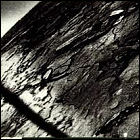 The Soviet Union’s unmanned Venera 14 space probe successfully lands on the planet Venus, its landing module enduring almost an hour in temperatures of nearly 900 degrees Fahrenheit and air pressure nearly 100 times that experienced at sea level on Earth. A soil sampling experiment is thwarted by an unforseen problem, namely the lens cap of Venera 14’s camera popping off and landing precisely where its sampling arm was designed to gather Venusian soil for testing.
The Soviet Union’s unmanned Venera 14 space probe successfully lands on the planet Venus, its landing module enduring almost an hour in temperatures of nearly 900 degrees Fahrenheit and air pressure nearly 100 times that experienced at sea level on Earth. A soil sampling experiment is thwarted by an unforseen problem, namely the lens cap of Venera 14’s camera popping off and landing precisely where its sampling arm was designed to gather Venusian soil for testing.
Voyager 2 at Saturn
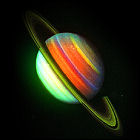 The NASA/JPL unmanned space probe Voyager 2 makes its closest pass to the planet Saturn. Unlike Voyager 1, Voyager 2 does not make a close pass to the large moon Titan, and uses Saturn’s gravity to deflect it toward the planet Uranus, the first man-made spacecraft to aim for that planet. Problems with the aiming mechanism of the scan platform – the arm of the spacecraft containing Voyager’s camera and imaging systems – call the viability of a Uranus flyby into question for a short time, but the issue is resolved and workaround procedures are developed in the event of a recurring problem.
The NASA/JPL unmanned space probe Voyager 2 makes its closest pass to the planet Saturn. Unlike Voyager 1, Voyager 2 does not make a close pass to the large moon Titan, and uses Saturn’s gravity to deflect it toward the planet Uranus, the first man-made spacecraft to aim for that planet. Problems with the aiming mechanism of the scan platform – the arm of the spacecraft containing Voyager’s camera and imaging systems – call the viability of a Uranus flyby into question for a short time, but the issue is resolved and workaround procedures are developed in the event of a recurring problem.
GOES-5 goes up
 NOAA’s GOES-5 Geostationary Operational Environmental Satellite is launched from Cape Canaveral into a geosynchronous orbit over 85 degrees west longitude on Earth, a position which will change several times over GOES-5’s career until 1988, allowing it to monitor weather over the continental United States and Europe. GOES-5’s primary set of “eyes” will fail in 1984, forcing NOAA to return GOES-1 and GOES-4 to service until a replacement can be launched in 1987. Its usefulness as a weather satellite at an end, GOES-5 will be boosted into a graveyard orbit in 1990.
NOAA’s GOES-5 Geostationary Operational Environmental Satellite is launched from Cape Canaveral into a geosynchronous orbit over 85 degrees west longitude on Earth, a position which will change several times over GOES-5’s career until 1988, allowing it to monitor weather over the continental United States and Europe. GOES-5’s primary set of “eyes” will fail in 1984, forcing NOAA to return GOES-1 and GOES-4 to service until a replacement can be launched in 1987. Its usefulness as a weather satellite at an end, GOES-5 will be boosted into a graveyard orbit in 1990.
Pioneer Venus completes its map… for now
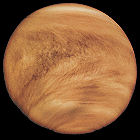 NASA’s unmanned Pioneer Venus Orbiter completes its radar mapping survey of the planet Venus, having used radar to create the first-ever topographical map of that world, which is usually hidden behind a thick, toxic cloud deck. Launched in 1978, Pioneer Venus Orbiter is the only surviving component of the two-vehicle Pioneer Venus mission, but with its solar arrays still gathering adequate power and all of its instruments still functioning well, the orbiter is not deactivated or deorbited at this time; future tasks will be found for it in the years ahead.
NASA’s unmanned Pioneer Venus Orbiter completes its radar mapping survey of the planet Venus, having used radar to create the first-ever topographical map of that world, which is usually hidden behind a thick, toxic cloud deck. Launched in 1978, Pioneer Venus Orbiter is the only surviving component of the two-vehicle Pioneer Venus mission, but with its solar arrays still gathering adequate power and all of its instruments still functioning well, the orbiter is not deactivated or deorbited at this time; future tasks will be found for it in the years ahead.
NASA exercises the Uranus Option
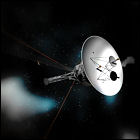 NASA receives approval to continue Voyager 2‘s mission to the planets beyond Saturn, provided that Voyager 1’s visit to Saturn and its moons goes satisfactorily. The approval includes an additional $100,000,000 budget increase to keep Voyager’s ground controllers, engineers and staff scientists on JPL’s payroll through the Uranus encounter, which is expected to take place in 1986.
NASA receives approval to continue Voyager 2‘s mission to the planets beyond Saturn, provided that Voyager 1’s visit to Saturn and its moons goes satisfactorily. The approval includes an additional $100,000,000 budget increase to keep Voyager’s ground controllers, engineers and staff scientists on JPL’s payroll through the Uranus encounter, which is expected to take place in 1986.
Voyager 1 at Saturn
 Thanks to a significant gravity assist from Jupiter, Voyager 1 arrives at Saturn only a year behind Pioneer 11, imaging the planet, its rings and its moons in far greater detail. Its planned trajectory takes Voyager 1 close to the cloud-shrouded moon Titan, whose surface scientists hope to be able to see for the first time, but the close flyby yields only the featureless clouds, much to the mission planners’ disappointment. This is Voyager 1’s final planetary stop, with a proposed visit to Pluto having fallen by the wayside early in mission planning in favor of the close-up look at Titan.
Thanks to a significant gravity assist from Jupiter, Voyager 1 arrives at Saturn only a year behind Pioneer 11, imaging the planet, its rings and its moons in far greater detail. Its planned trajectory takes Voyager 1 close to the cloud-shrouded moon Titan, whose surface scientists hope to be able to see for the first time, but the close flyby yields only the featureless clouds, much to the mission planners’ disappointment. This is Voyager 1’s final planetary stop, with a proposed visit to Pluto having fallen by the wayside early in mission planning in favor of the close-up look at Titan.
GOES-4 goes up
 NOAA’s GOES-4 Geostationary Operational Environmental Satellite is launched from Cape Canaveral into a geosynchronous orbit over 98 degrees west longitude on Earth, a position which will change several times over GOES-4’s career until 1988, allowing it to monitor weather over the continental United States and Europe. In 1988, GOES-4 will become the first satellite to be boosted into a “graveyard” parking orbit using its remaining propellant, leaving it intact in a higher-than-geostationary orbit to avoid collisions with operational satellites.
NOAA’s GOES-4 Geostationary Operational Environmental Satellite is launched from Cape Canaveral into a geosynchronous orbit over 98 degrees west longitude on Earth, a position which will change several times over GOES-4’s career until 1988, allowing it to monitor weather over the continental United States and Europe. In 1988, GOES-4 will become the first satellite to be boosted into a “graveyard” parking orbit using its remaining propellant, leaving it intact in a higher-than-geostationary orbit to avoid collisions with operational satellites.
Voyager 2 and the Backup Mission Load
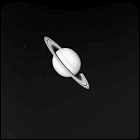 With the Jupiter encounter behind it, NASA’s Voyager 2 unmanned spacecraft is given a new backup mission plan, replacing the original Jupiter/Saturn backup plan implemented after a radio receiver failure befell the spacecraft in 1978. Intended to reap the minimum acceptable science observations (including photography) and transmit them to Earth should Voyager 2’s ability to receive new commands be lost, this new backup mission load now includes automated observation plans for Saturn and Uranus, the latter of which will not be reached until 1986.
With the Jupiter encounter behind it, NASA’s Voyager 2 unmanned spacecraft is given a new backup mission plan, replacing the original Jupiter/Saturn backup plan implemented after a radio receiver failure befell the spacecraft in 1978. Intended to reap the minimum acceptable science observations (including photography) and transmit them to Earth should Voyager 2’s ability to receive new commands be lost, this new backup mission load now includes automated observation plans for Saturn and Uranus, the latter of which will not be reached until 1986.
Viking 2 signing off
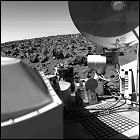 Two years after the shutdown of its orbiter leaves it sending observations of the Martian environment back to Earth at a low bit rate, the Viking 2 lander’s batteries are depleted and the second spacecraft to land on Mars shuts down permanently. Its three-and-a-half-year operational lifespan has been a bonus round for a robotic vehicle expected to function for a few months in Mars’ harsh weather.
Two years after the shutdown of its orbiter leaves it sending observations of the Martian environment back to Earth at a low bit rate, the Viking 2 lander’s batteries are depleted and the second spacecraft to land on Mars shuts down permanently. Its three-and-a-half-year operational lifespan has been a bonus round for a robotic vehicle expected to function for a few months in Mars’ harsh weather.
Solar Maximum Mission
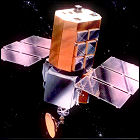 NASA launches the unmanned Solar Maximum Mission satellite atop a Delta 3910 rocket, to study cyclical solar flare activity from Earth orbit. Built by Fairchild and relying on a magnetic reaction wheel system to maintain precise aim at the sun, “Solar Max” suffers malfunctions in orbit, and will be able to carry out only limited observations by November 1980. In 1984, Solar Max will become the first satellite to be repaired in-orbit by a visiting space shuttle crew. After repairs, the satellite will be released, with its life span in orbit having effectively doubled. It will remain in orbit, and functional, through 1989.
NASA launches the unmanned Solar Maximum Mission satellite atop a Delta 3910 rocket, to study cyclical solar flare activity from Earth orbit. Built by Fairchild and relying on a magnetic reaction wheel system to maintain precise aim at the sun, “Solar Max” suffers malfunctions in orbit, and will be able to carry out only limited observations by November 1980. In 1984, Solar Max will become the first satellite to be repaired in-orbit by a visiting space shuttle crew. After repairs, the satellite will be released, with its life span in orbit having effectively doubled. It will remain in orbit, and functional, through 1989.
Voyager 1 and the case of the wrong star
 NASA temporarily loses contact with unmanned space probe Voyager 1 as it cruises toward Saturn. A science experiment is conducted which requires Voyager to point its antenna away from Earth and enter a rolling maneuver, but ground controllers do not hear back from Voyager 1 when they expect to receive the signal that the experiment has ended. A tracking station in Australia sends a wide-beam command to Voyager 1 to reorient itself; it is later discovered that, attempting to regain its orientation with respect to Earth, Voyager 1’s star tracker locked on to Alpha Centauri instead of Canopus, pointing its antenna dish five degrees away from Earth. Normal operations resume once Voyager is pointed correctly. A similar problem will again cause Voyager 1 to break contact after a course correction burn in December.
NASA temporarily loses contact with unmanned space probe Voyager 1 as it cruises toward Saturn. A science experiment is conducted which requires Voyager to point its antenna away from Earth and enter a rolling maneuver, but ground controllers do not hear back from Voyager 1 when they expect to receive the signal that the experiment has ended. A tracking station in Australia sends a wide-beam command to Voyager 1 to reorient itself; it is later discovered that, attempting to regain its orientation with respect to Earth, Voyager 1’s star tracker locked on to Alpha Centauri instead of Canopus, pointing its antenna dish five degrees away from Earth. Normal operations resume once Voyager is pointed correctly. A similar problem will again cause Voyager 1 to break contact after a course correction burn in December.
High Energy Astronomy Observatory 3
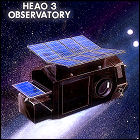 NASA launches the third and final High Energy Astronomy Observatory satellite into Earth orbit, where it begins studying gamma ray sources and the nature of cosmic rays. There is also an experiment package designed to detect heavy atomic nuclei. HEAO-3 will remain in service through May 1981, and it will re-enter Earth’s atmosphere in December of that year.
NASA launches the third and final High Energy Astronomy Observatory satellite into Earth orbit, where it begins studying gamma ray sources and the nature of cosmic rays. There is also an experiment package designed to detect heavy atomic nuclei. HEAO-3 will remain in service through May 1981, and it will re-enter Earth’s atmosphere in December of that year.
Pioneer 11: first visitor to Saturn
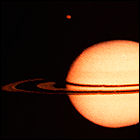 The unmanned space probe Pioneer 11 makes its closest approach to the planet Saturn, the first man-made object to visit the ringed planet. Scientists pay careful attention to Pioneer’s transmissions as it passes between Saturn’s clouds and its rings, watching for signs of damage (or worse) resulting from collision with the tiny particles that are predicted to exist there; Pioneer 11 slides past Saturn at a distance of only 12,800 miles from the planet’s cloudtops. This is Pioneer 11’s last planetary stop.
The unmanned space probe Pioneer 11 makes its closest approach to the planet Saturn, the first man-made object to visit the ringed planet. Scientists pay careful attention to Pioneer’s transmissions as it passes between Saturn’s clouds and its rings, watching for signs of damage (or worse) resulting from collision with the tiny particles that are predicted to exist there; Pioneer 11 slides past Saturn at a distance of only 12,800 miles from the planet’s cloudtops. This is Pioneer 11’s last planetary stop.
Adrastea
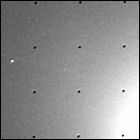 Tiny Adrastea, a small, asteroid-like moon of Jupiter, is discovered in photos returned by Voyager 2 during its flyby of the planet. Adrastea orbits along the outer edge of Jupiter’s ring system, and is likely to be the body from which material for that ring is ejected. Its close orbit carries it around the planet at a speed faster than Jupiter’s rotation, one of the few bodies in the solar system locked into such a fast orbit.
Tiny Adrastea, a small, asteroid-like moon of Jupiter, is discovered in photos returned by Voyager 2 during its flyby of the planet. Adrastea orbits along the outer edge of Jupiter’s ring system, and is likely to be the body from which material for that ring is ejected. Its close orbit carries it around the planet at a speed faster than Jupiter’s rotation, one of the few bodies in the solar system locked into such a fast orbit.
The Volcanoes of Io
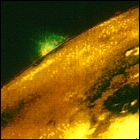 JPL navigation engineer Linda Morabito, double-checking raw Voyager 1 images to ensure that the unmanned space probe is properly aligned for its encounter with Saturn in 1980, discovers the first evidence of active volcanoes on another body in Earth’s solar system: a plume of sulfur erupting over 150 feet above the surface of Jupiter’s moon Io. Scientists rush to check Voyager 1’s other Io images, and find that Voyager’s cameras caught more than half a dozen eruptions in the act.
JPL navigation engineer Linda Morabito, double-checking raw Voyager 1 images to ensure that the unmanned space probe is properly aligned for its encounter with Saturn in 1980, discovers the first evidence of active volcanoes on another body in Earth’s solar system: a plume of sulfur erupting over 150 feet above the surface of Jupiter’s moon Io. Scientists rush to check Voyager 1’s other Io images, and find that Voyager’s cameras caught more than half a dozen eruptions in the act.
Voyager 1 at Jupiter
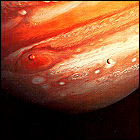 The unmanned NASA/JPL space probe Voyager 1 makes its closest approach to the giant planet Jupiter, a little over 200,000 miles away. While Voyager’s higher-resolution cameras trump any of the Pioneer images of Jupiter, the real revelation proves to be Jupiter’s four largest moons, revealing a smooth-but-cracked icy surface on Europa, craters on Ganymede and Callisto, and the colorful mountains of Io, whose biggest secret goes undiscovered until a few days after Voyager 1’s closest flyby.
The unmanned NASA/JPL space probe Voyager 1 makes its closest approach to the giant planet Jupiter, a little over 200,000 miles away. While Voyager’s higher-resolution cameras trump any of the Pioneer images of Jupiter, the real revelation proves to be Jupiter’s four largest moons, revealing a smooth-but-cracked icy surface on Europa, craters on Ganymede and Callisto, and the colorful mountains of Io, whose biggest secret goes undiscovered until a few days after Voyager 1’s closest flyby.
Voyager 1 and the rings of Jupiter
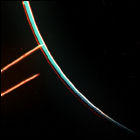 As it nears its closest approach to the planet Jupiter, NASA’s Voyager 1 space probe detects the first likely signs of a ring system around Jupiter’s equatorial region. Barely visible until Voyager 1 is behind the planet and can see them through scattered sunlight, the rings are only about 20 miles thick, but are over 150,000 miles in diameter. The lead time between Voyager 1’s visit and Voyager 2’s later flyby allows ground controllers to plan a better observation campaign for Voyager 1’s sister ship, and the rings are observed in more detail by the later Galileo and New Horizons missions.
As it nears its closest approach to the planet Jupiter, NASA’s Voyager 1 space probe detects the first likely signs of a ring system around Jupiter’s equatorial region. Barely visible until Voyager 1 is behind the planet and can see them through scattered sunlight, the rings are only about 20 miles thick, but are over 150,000 miles in diameter. The lead time between Voyager 1’s visit and Voyager 2’s later flyby allows ground controllers to plan a better observation campaign for Voyager 1’s sister ship, and the rings are observed in more detail by the later Galileo and New Horizons missions.
Voyager 1: Jupiter ahead!
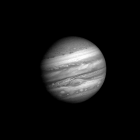 From a distance of 36 million miles, NASA/JPL’s unmanned spacecraft Voyager 1 can already see the planet Jupiter in far greater detail than the cameras aboard Pioneers 10 and 11. Over the next month, Voyager 1 records images as it closes in on its first planetary target, spotting roiling storm clouds and fluid cloud bands with unprecedented clarity; JPL assembles the images into a “movie.” Despite the size of Jupiter at the end of the sequence, Voyager 1 is still over a month away from its closest pass to the giant planet.
From a distance of 36 million miles, NASA/JPL’s unmanned spacecraft Voyager 1 can already see the planet Jupiter in far greater detail than the cameras aboard Pioneers 10 and 11. Over the next month, Voyager 1 records images as it closes in on its first planetary target, spotting roiling storm clouds and fluid cloud bands with unprecedented clarity; JPL assembles the images into a “movie.” Despite the size of Jupiter at the end of the sequence, Voyager 1 is still over a month away from its closest pass to the giant planet.
Pioneer Venus: visit to a hot planet
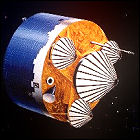 Just five days after the arrival of the Pioneer Venus Orbiter, the Pioneer Venus Multiprobe arrives at Venus, having already deployed its payload of four atmospheric penetration probes on their own trajectories to plunge through the planet’s dense atmosphere at different latitudes. Only one of these probes survives impact, transmitting for an hour afterward. The Multiprobe “bus” spacecraft, having relayed the smaller probes’ readings to Earth, then follows suit, plunging into the atmosphere and disintegrating before it can hit the surface. The Pioneer Venus Orbiter remains at Venus into the 1990s.
Just five days after the arrival of the Pioneer Venus Orbiter, the Pioneer Venus Multiprobe arrives at Venus, having already deployed its payload of four atmospheric penetration probes on their own trajectories to plunge through the planet’s dense atmosphere at different latitudes. Only one of these probes survives impact, transmitting for an hour afterward. The Multiprobe “bus” spacecraft, having relayed the smaller probes’ readings to Earth, then follows suit, plunging into the atmosphere and disintegrating before it can hit the surface. The Pioneer Venus Orbiter remains at Venus into the 1990s.
High Energy Astronomy Observatory 2: Einstein
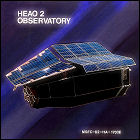 NASA launches the second High Energy Astronomy Observatory satellite, which is given the nickname “Einstein” when it enters service. HEAO-2 is a dedicated X-ray telescope with unprecedented sensitivity and accuracy, and will remain in service through March 1982, re-entering Earth’s atmosphere a week afterward.
NASA launches the second High Energy Astronomy Observatory satellite, which is given the nickname “Einstein” when it enters service. HEAO-2 is a dedicated X-ray telescope with unprecedented sensitivity and accuracy, and will remain in service through March 1982, re-entering Earth’s atmosphere a week afterward.
Nimbus 7
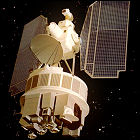 NASA launches the Nimbus 7 satellite, the last of a series of experimental satellites designed to test new weather and climate detection technologies. This satellite tests more precise attitude control systems and instruments designed to monitor the layer of ozone within Earth’s atmosphere. Many of the technologies developed in the Nimbus series are transferred not to future weather satellites, but to future Landsat Earth observation satellites.
NASA launches the Nimbus 7 satellite, the last of a series of experimental satellites designed to test new weather and climate detection technologies. This satellite tests more precise attitude control systems and instruments designed to monitor the layer of ozone within Earth’s atmosphere. Many of the technologies developed in the Nimbus series are transferred not to future weather satellites, but to future Landsat Earth observation satellites.
Voyagers survive the asteroid belt
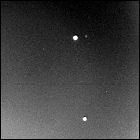 Voyager 1 emerges unharmed from what is considered the outer limit of the asteroid belt between Mars and Jupiter, having entered this 223,000,000-mile-wide zone of space in December 1977. Voyager 2 is expected to emerge similarly unscathed in late October 1978. NASA’s Pioneer 10 and 11 spacecraft had already demonstrated, in the early 1970s, that passage through the asteroid belt without mission-jeopardizing damage is possible. Both spacecraft are already imaging Jupiter from a distance of less than 180,000,000 miles, now meeting or exceeding the resolution of the best photos of Jupiter taken from Earth-based telescopes.
Voyager 1 emerges unharmed from what is considered the outer limit of the asteroid belt between Mars and Jupiter, having entered this 223,000,000-mile-wide zone of space in December 1977. Voyager 2 is expected to emerge similarly unscathed in late October 1978. NASA’s Pioneer 10 and 11 spacecraft had already demonstrated, in the early 1970s, that passage through the asteroid belt without mission-jeopardizing damage is possible. Both spacecraft are already imaging Jupiter from a distance of less than 180,000,000 miles, now meeting or exceeding the resolution of the best photos of Jupiter taken from Earth-based telescopes.